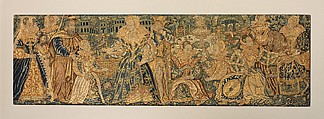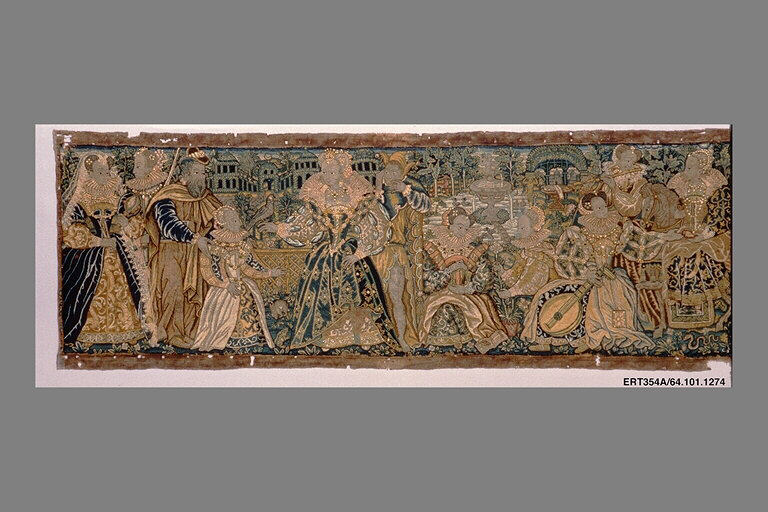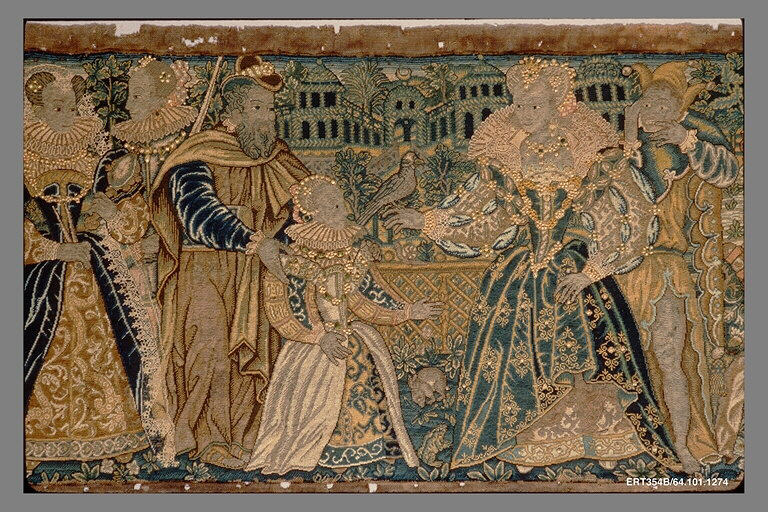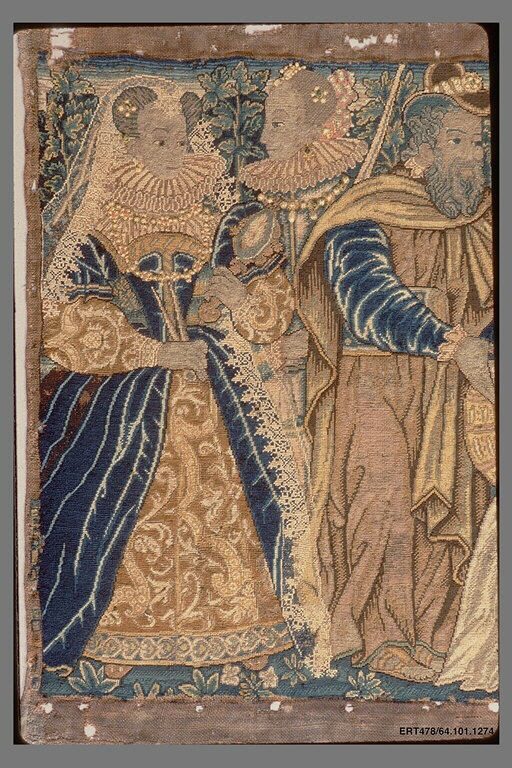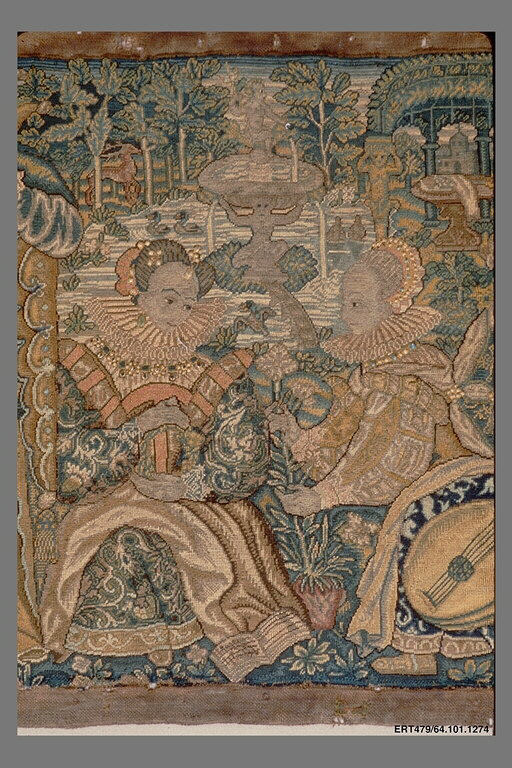Valance
Not on view
This valance, executed in wool tent stitch with silk highlights, follows a common compositional structure found in large-scale narrative embroideries and tapestries, that of combining multiple scenes in one continuous panel. The valance depicts scenes from courtly life, but the precise narrative has not been identified. Yvonne Hackenbroch titled this piece "The Education of Princess Elizabeth I" mainly because of the young child with the man in classical garb, said to be a depiction of Elizabeth I’s tutor, Roger Ascham, but there is no other iconography to support this reading. The embroidery could simply illustrate the daily activities of ladies at court, although the interaction of the various figures implies the existence of a specific sequence of events.
One possible iconographical reading lies in the identification of contemporary female personifications of the Five Senses. Reading from left to right, the woman gazing into the mirror may personify Sight; the woman with a falcon gesturing toward the young girl may personify Touch; the woman in profile in front of the fountain may represent Smell as she bends toward a potted flower; and the women playing musical instruments would represent Hearing. However, there is no obvious personification of the sense of taste. Additionally, the older man ushering a young girl toward the woman with the falcon, the presence of the jester, and the woman on horseback suggest that a specific narrative is intended.
The valance can be compared to other valances and panels with unidentified narratives; similar scenes with equally opaque narratives involving costumed figures and garden settings, for example, are on two valances in the Musée de la Renaissance, Château d’Écouen, documented by Maria-Anne Privat-Savigny in 2003. These hunting and court scenes are interspersed with dramatically posed figures, such as a woman begging on her knees and two decapitations. Other valances and decorative panels of tent stitch illustrate biblical or mythological tales and, more rarely, historical events.
Valances of this type have generally been dated to the late sixteenth century, based in part on the attire of the figures and the woven textile patterns that correspond to those found in extant textiles from the period. The clothing closely relates to costume prints from such books as Cesare Vecellio’s Habiti Antichi e Moderni di Diversi Parti del Mondo (1590) and Pierre Bertelli’s Habits des Diverses Nations (1594); these depictions (the first fashion plates) of the dress of various classes and cultures appear to have circulated widely throughout Europe. The use of tent stitch on canvas appeared in England by the middle of the sixteenth century, although it was practiced earlier in France. Santina Levey credits this technique’s introduction to English furnishing textiles to the influence of the French court. It is difficult, therefore, to attribute definitively many of these designs to one place of manufacture, when they were clearly produced in France, Scotland, and England, based on many of the same sources.
This panel was most likely one of a set of bed valances intended to decorate the edges of a tester that hung over a bed in order to cover the attachment points of the bed curtains. During the sixteenth and seventeenth centuries, the bed was one of the most important pieces of furniture in the household. The finest sets of hangings would have included embroidered inner and outer valances, curtains, a tester, and a counterpane, in addition to embroidered pillows. Embroidered valances were also used to decorate the tops of walls, typically over a wall surface covered in textiles.
[Elyse Gerstenecker, adapted from English Embroidery from The Metropolitan Museum of Art, 1580-1700: 'Twixt Art and Nature / Andrew Morrall and Melinda Watt ; New Haven ; London : Published for The Bard Graduate Center for Studies in the Decorative Arts, Design, and Culture, New York, The Metropolitan Museum of Art, New York [by] Yale University Press, 2008.]
Due to rights restrictions, this image cannot be enlarged, viewed at full screen, or downloaded.
This artwork is meant to be viewed from right to left. Scroll left to view more.
